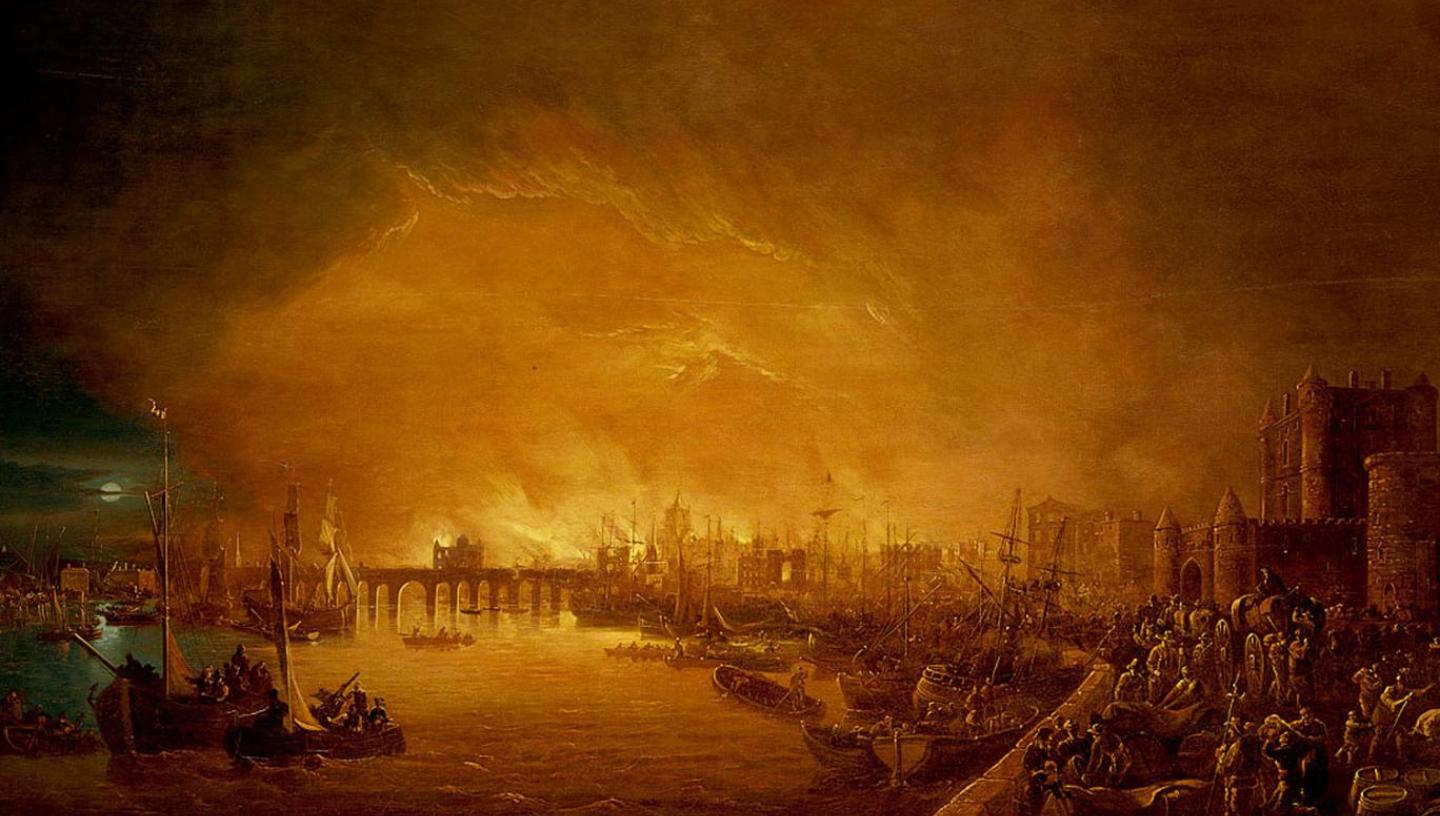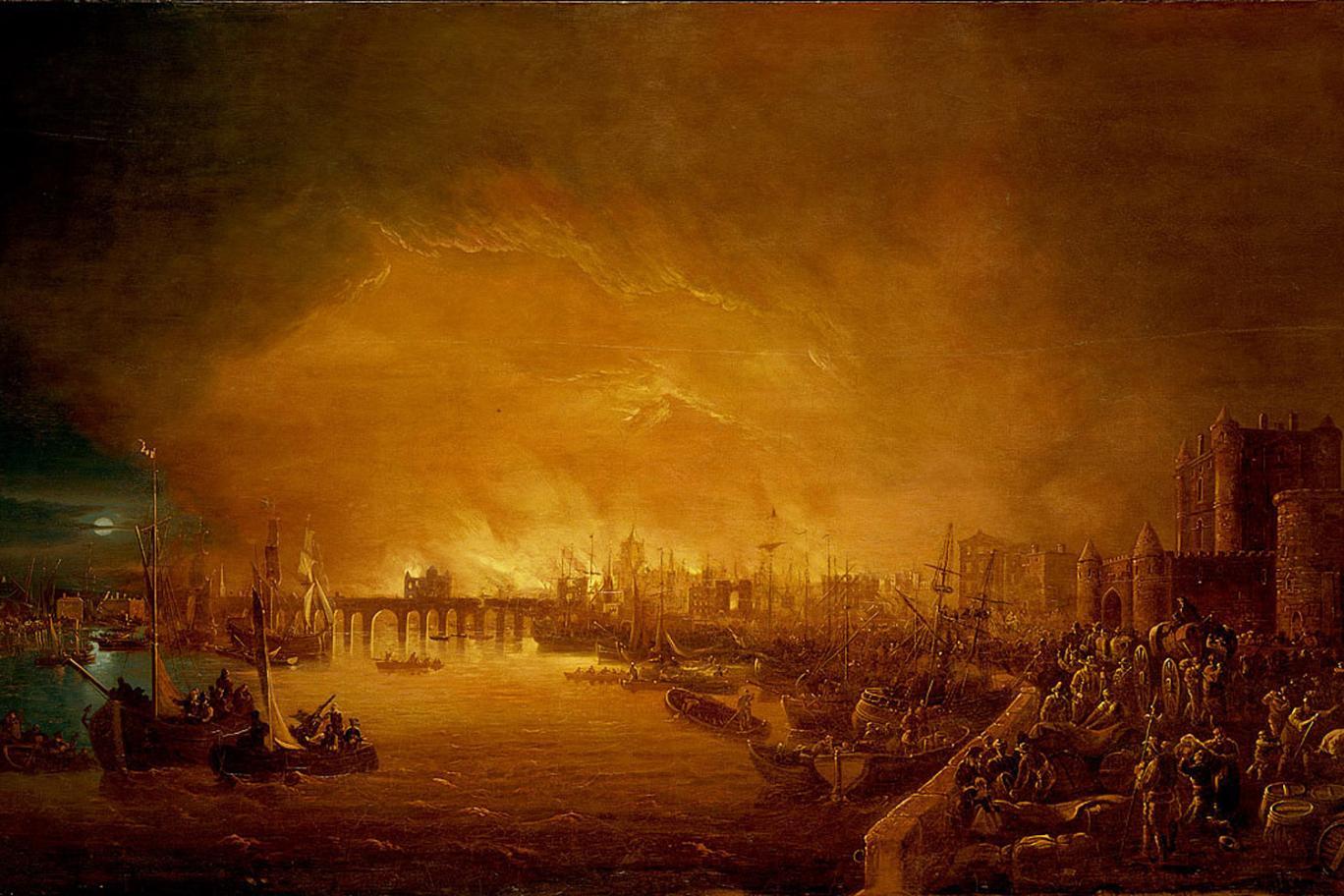On Sunday 2nd September, 1666 at 3am, Jane Birch woke Mr and Mrs Pepys in alarm: the flames were already up to All Hallows, a quarter of a mile from their home in Seething Lane.
Meanwhile a few miles to the north of the city, Pepys’ friend, Robert Hooke, Curator of Experiments for the Royal Society, was also somewhat alarmed, as he stood watching, from the roof of Gresham College where he lived. In fact the Great Fire would reach Bishops Gate, just one block away from Gresham College, before the flames finally subsided.
Fate spared Pepys to write his vivid account and placed Hooke in the centre of the clean up operations for amidst the devastation, Gresham College became the temporary home for the Corporation of London and City businesses and by Spring 1667, Hooke was appointed Surveyor for the City of London. In the ashes of the ravaged city, he immediately began to stake out new streets, homes and businesses. His childhood friend, Christopher Wren now represented the Crown as Surveyor for Royal Works and these two brilliant men would soon set about rebuilding London in partnership.
There was now a refugee crisis: thousands of homeless Londoners were living in tents on Lincolns Inn Fields, Hatton Gardens and the piazza at Covent Garden: the design for the new metropolis would be governed by urgent and pragmatic compromises.
It was a Herculean task for the Hooke - Wren partnership. The two men worked at breakneck speed, meeting almost daily between 1666 and 1680, conferring in Jonathan’s or Garraways, their favourite coffee houses.
From the King’s point of view, Wren, the shiny new architect was the prominent figure in the partnership but recent biographers reveal that Hooke’s expertise in mechanics actually made him the lead partner; just look at the double vaulted dome of St Paul’s, a masterpiece of engineering; Hooke knew that the distribution of forces around a dome depended on its shape and weight and had the ingenious idea of making first an upside down model of chain mail!
The Monument was Hooke’s design as well: 202 ft tall but inside there was a zenith telescope, beneath which Hooke had built a basement laboratory.
Given the fluid nature of the partnership, historians have had difficulty in deciphering which of the fifteen city churches were solely designed by Hooke but recent biographers posit St Martin’s within Ludgate as probably his strongest claim. Moreover original drawings of St Benet Paul’s Wharf and St Edmunds the King indicate that these are strong contenders as well.
Hooke also played a prominent part in settling disputes, erupting out of the staking out process whereby party walls had been altered or streets widened. According to Corporation records, he showed sensitivity and scrupulous judgment and yet Newton’s description “strange unsociable temper” still shadows his legacy.
But it was not just Newton who diminished Hooke’s reputation: ironically the family of his old friend also played a part; Hooke’s contribution to the rebuilding of London was obscured in direct proportion to the celebration and eulogising of Wren, after his death.
In 2006, when I began researching Hanging Hooke, I of course visited all these familiar sites, hungry to learn more about our London’s Leonardo. I walked around the Monument - no mention of Robert Hooke. In St Paul’s, the words of Wren’s son extolled me to look around and admire only his father’s labours. Apparently his father was solely responsible for all the city churches as well. I was profoundly shocked.
I always knew history was written by the victors but I never realised that the Brothers Grimm had had a hand in it as well!!
However - suffice it to say - that I do now believe Robert Hooke is emerging from the shadows. As my old History Tutor used to say: given Time, the Truth will always out!
Siobhán Nicholas also explores the life of Robert Hooke in the solo play
Hanging Hooke
All tickets for the performance on 1st March at 8pm just £15 using code HOOKE when booking online, by phone or in person at the box office.



